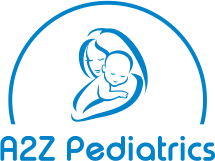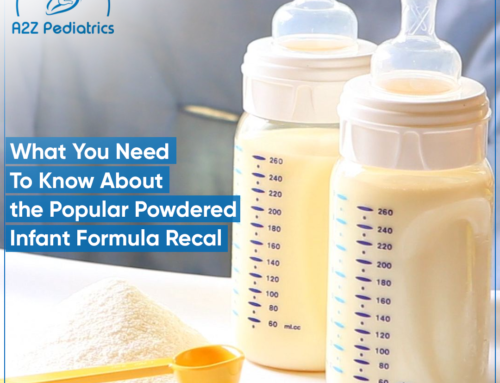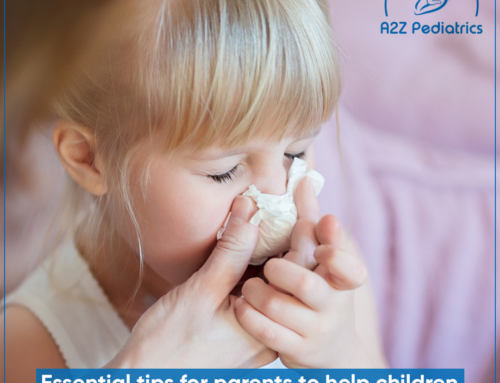Nutrition is one of the most important components of a child’s growth and development and in maintaining the health and wellness of a child. It is also responsible for reducing the risks of some chronic diseases as the child grows. In addition, such serious diseases, or medical conditions can happen if a child does not get the required amount of nutrition.
A low dosage of appropriate nutrition can also make a very significant impact on the health and the quality of a life of a child. Approximately, 400,000 children are born with severe medical complexities in the United States. Such children need specific feeding methods to meet the requirement of the nourishment for progressing and growth in their bodies. Children, who are unable to meet their nutritional needs usually, end up in abnormal growth.
When feeding a child with special needs an appropriate mealtime and mood are required. You need to provide a quiet atmosphere where the child can focus on the meal. Your child needs to be in a comfortable position where he or she can eat properly without choking. Share positive emotions with your child and don’t show them any frustrations during the meal
You need to choose the food wisely and give specific food that the doctor has advised for your child. At times specific meals are allowed such as food that has high magnesium or food that is in liquid form. Following are a few elements that your child may or may not need depending on the doctor’s prescription and also a few feed methods that may help you. If you feel like talking to an expert or need assistance the best for you would be Oakbrook Pediatrics.

Special Diet
Children who have a special condition and are taking specific medication or certain medications do need to follow a special diet. These diets could either increase the amount of nutrition that is needed or could also limit the amount of fluid and the drinks that a child has.
Six types of diets explain everything better:
- Low Fat Diet
- High magnesium diet
- High potassium diet
- Low bacteria diet
- Prednisone.
A Low-Fat Diet Or a Fat-Free Diet
is also known as chylothorax. It occurs when the fluid that digests fats, builds up around the lungs. It puts high pressure on the lungs. That makes it difficult for the child to breathe and is treated by draining out the extra fluid around the lungs A specific diet has to be followed and special cooking special methods such as steaming food, barbecuing baking are recommended to be followed.
A High Magnesium Diet
Is usually suggested if the child lacks magnesium in the body. It is an important mineral that needs that the body needs to function properly. The best sources for magnesium are vegetables, greens, vegetables, whole grains, seafood, peas, and beans. Special cooking such as baking boiling and steaming are advised since these three methods keep the magnesium high in food
A High Potassium Diet
plays the same role as magnesium. It is also very important for the child’s body to function properly.
Low Bacteria Diet
Is a diet where the doctors suggest avoiding specific food. If a child has had a recent blood and marrow transplant, he or she will be kept on a low bacteria diet to minimize bacteria. Hygiene in this diet is very important.
Cheese, raw fish, and food that is left under high heat would be advised to be avoided. Vitamin D supplements are very important.
Usually, after a bone marrow transplant, a child’s immune system gets weak. A child with a weak immune system usually tends to get sicker as compared to others.
After an allogenic transplant, your child is supposed to stay on the same diet for six months and after an autologous transplant, they should be on the diet for six months.
A few specific foods are to be avoided on low bacteria diets, such as beans, Clover, and raw Sprouts, salads prepared in stores, grapefruits, and tangelos.
Milk and milk products are to be avoided such as raw milk cheese and pasteurized milk, or other dairy products.
Meat and meat alternative foods are to be avoided.
The main factor that is very important in such a diet is vitamin D, a child who is one needs at least 400 IU a day, children between 1-3, 600 to 1000 IU a day, 4 and older 1000 to 2000 IU a day.
Prednisone
Is a drug that belongs to a specific class of drugs known as corticosteroids. It is used to treat specific conditions that include blood disorders, breathing problems, skin diseases, cancer eye, problems, arthritis, severe allergies, and immune system disorders. It usually decreases the immune system and is also capable of reducing symptoms of other various diseases such as swelling or different allergic reactions caused by the diseases. This medication is usually taken by mouth with food or milk to prevent an upset stomach.
Prednisone has side effects such as weight gain, high blood pressure, and increased appetite. It also creates a higher risk of developing osteoporosis and steroid-induced diabetes.
A high dose of calcium and vitamin D is required with a low-calorie diet. Being Physically Active is one of the most important tasks for a child while being on prednisone.
Restricting Fluids:
Some medical conditions restrict fluids for a child. When kidneys are not working properly they cannot flush out unwanted fluid and chemicals through urine. Instead, extra fluid is produced that stays in the body and keeps on building up. If too much fluid is built up in the body, it can cause severe problems such as high blood pressure breathing issues, puffiness, and weight gain,
The doctor might keep the child on a specific diet that means that they can have a specific amount of fluid and water. The ml prescribed by the doctor has to be strictly followed.
Types of formulas for complex nutritional needs:
Children with complex nutritional needs usually cannot properly Different types of formulas are given to them. Such as:
- Standard formula: standard formulas are given to children who can easily absorb and digest proteins as you would find in an average person or a child
- Semi Elementary formulas: SME are proteins that are moderately broken down into different forms that the digestive system can easily take and absorb
- Elemental formulas: EF contains completely broken down protein also commonly known as amino acids for children. It is specifically for children who have difficulty with digestion, absorption, or allergies.
- Whole food formula blends: WFFB is a combination of whole food blends and sometimes another formula is also added from the ones mentioned above to meet a specific requirement. This formula is very beneficial for a few but also life-threatening for children who cannot tolerate whole food formulas.
Feeding Methods:
Children born with medical complexities cannot take food like other babies. Different methods are used for such children, which include:
- Eternal
- Oral
- Tube feeding
- Parenteral.
Eternal feeding: Food is swallowed through the gastrointestinal (GI) tract in enteral feeding. The mouth, esophagus, stomach, and intestines make up the gastrointestinal tract. Nutrition can be given through the mouth or through a tube that goes straight to the stomach or small intestine, which is known as enteral feeding. The phrase enteral feeding is most commonly used in medical terminology which refers to tube feeding. A person on enteral feeds usually has a condition or injury that prohibits them from consuming a normal meal by mouth, but their gastrointestinal tract is still functioning. They can get nutrients and keep their GI system operating by being fed through a tube. Enteral feeding can be utilized to complement or replace their caloric intake.
Tube Feeding:
A gastrostomy tube is inserted into the stomach through a stoma in the abdomen, allowing enteral nutrition to be delivered directly to the stomach. In most cases, a gastrostomy is indicated as the ideal alternative when a child requires a tube for a longer period
Parenteral Feeding:
Parenteral feeding is when a person receives sustenance through their veins. To get liquid nutrition, you’ll have a venous access device implanted, such as a port or a peripherally inserted central catheter (PICC or PIC line). It’s known as peripheral parenteral nutrition if this is your supplemental nourishment (PPN). Total parenteral nutrition is what you get when you get all of your nutritional needs through an IV (TPN). In many cases, parenteral nutrition can save a person’s life. If at all possible, however, enteral feeding should be used. Enteral nutrition is the closest similar to regular feeding and can aid immune system function.
Children with complex nutritional needs are very sensitive when it comes to their food intake and medicines. It is advised that caretakers are attentive towards every little detail that the doctor has articulated but if in case you need any assistance you may contact Oakbrook Pediatrics Near Me.

Oakbrook Pediatrics & Adolescent Center
3825 Highland Ave, Tower 1 #2C
Downers Grove, IL 60515
Email:info@oakbrookpediatrics.com
Phone: (630) 971-6511




